Type 14 Mk 8 Mobile Radar Lorry
The goal was to produce a high-resolution, accurate digital replica of the vehicle for archival, educational, and exhibition purposes. The vehicle is housed within a large steel garage which provides challenging lighting conditions.
Given the complexity of the lorry’s geometry, open compartments, textured surface wear, and dense mechanical detail, the scanning process required multiple passes, varied lighting conditions, and iterative point cloud refinement.
With the body of the radar unit standing over 3m tall, the initial scan was carried out with a pocket gimbal camera on a long extension boom pole, as access was an issue. This proved problematic due to the poor lighting conditions so in the next round of photography, a mirrorless camera was used with a more robust tripod/monopod combination.
The tires of the radar lorry offered some of the cleanest and most consistent scan data across the entire vehicle. Their worn tread patterns, deep sidewall textures, and matte rubber surface provided excellent photogrammetric contrast, allowing RealityCapture to generate sharp geometry with minimal noise or misalignment. Unlike glossy or uniform metal panels, which often struggled with reflection or featureless areas, the tires served as anchor geometry in alignment passes and helped stabilize reconstruction across multiple image sets. They effectively became high-confidence geometry in the point cloud, often outperforming more complex or visually noisy areas like the engine bay or roof-mounted elements.
Control points were laid out in the photography stage using April tags for latter automatic recognition in RealityCapture. This also included a reference scale bar to ensure all dimensions were retained true to life.
Below are images of the most recent version
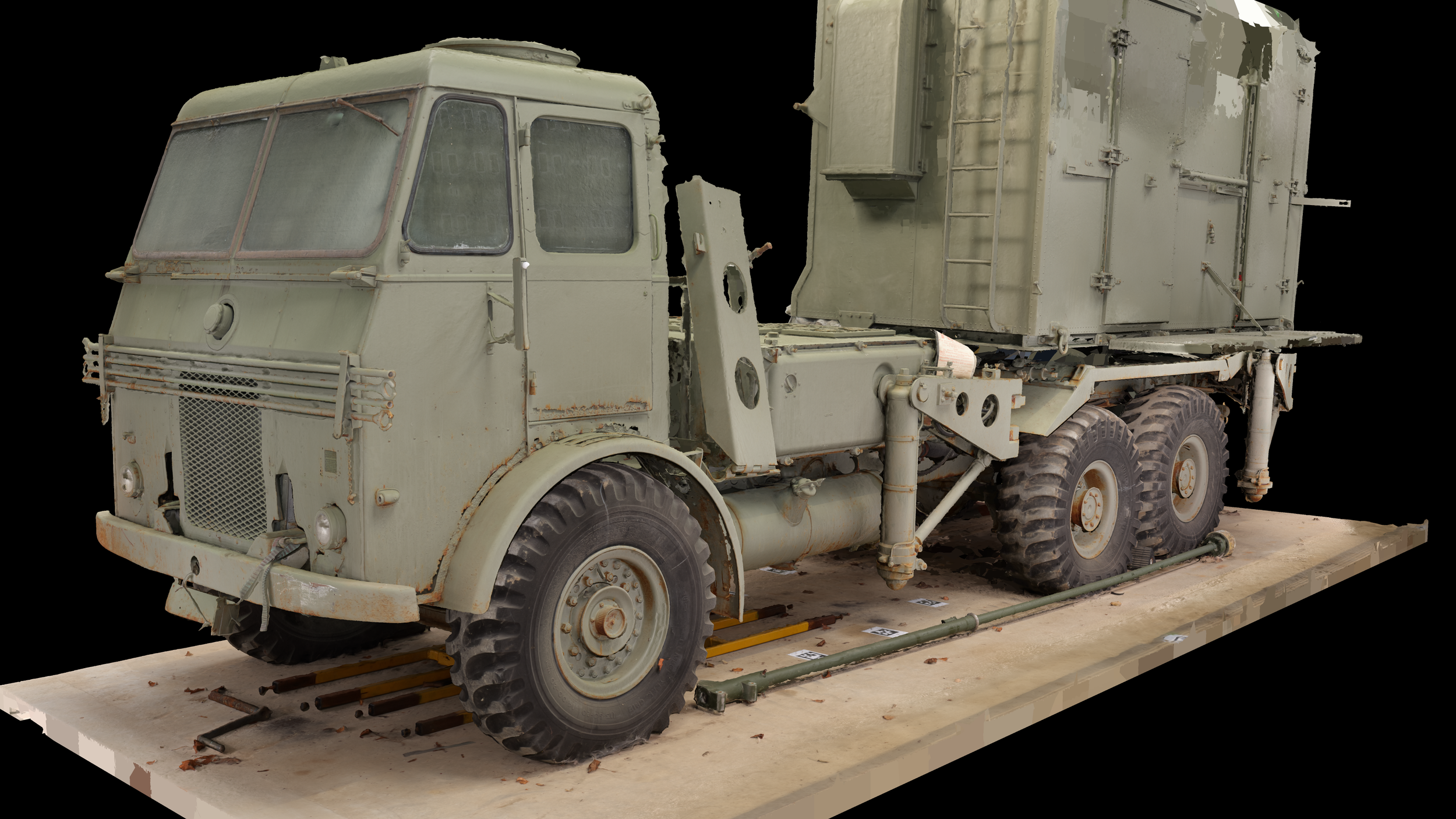
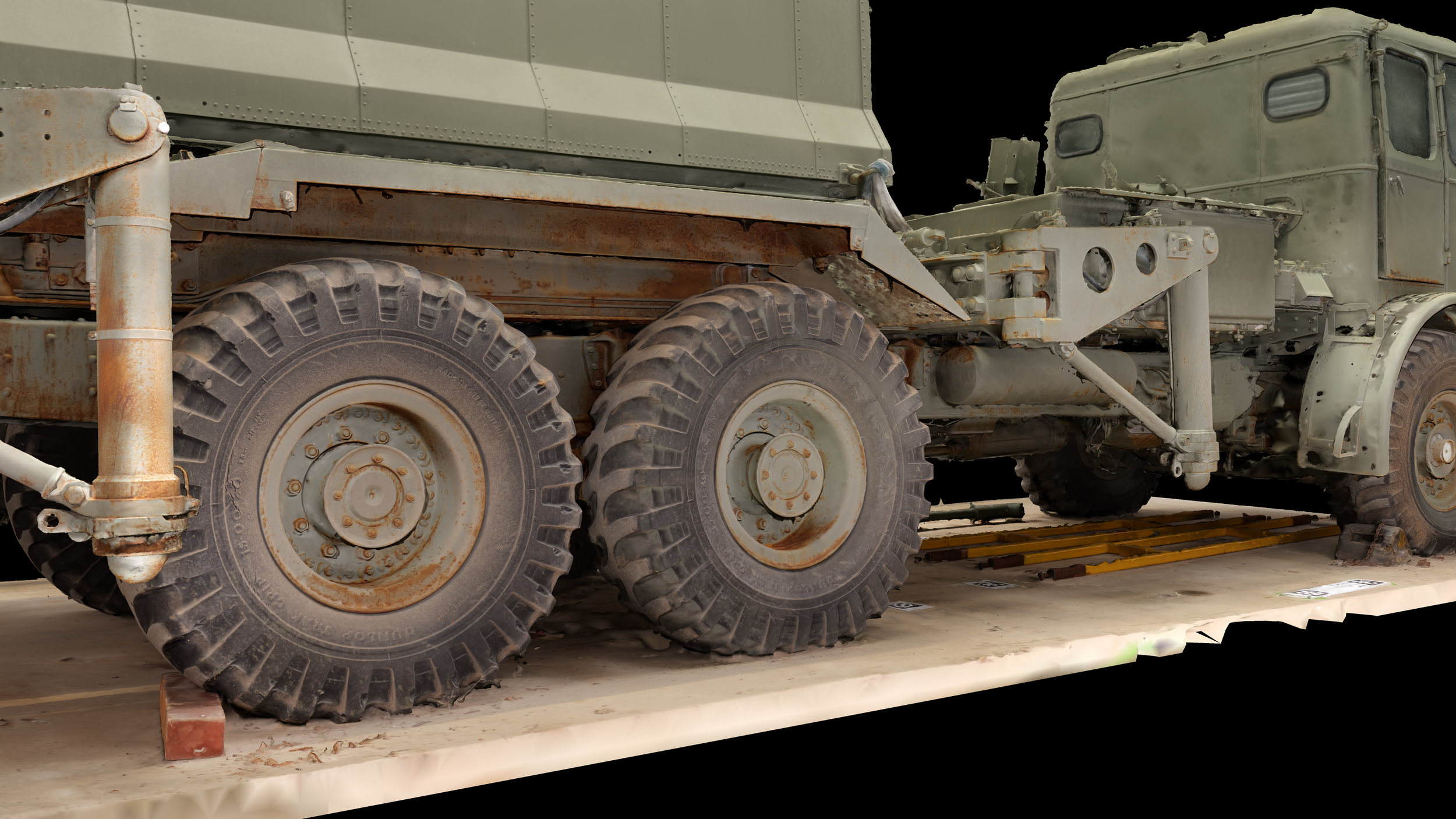
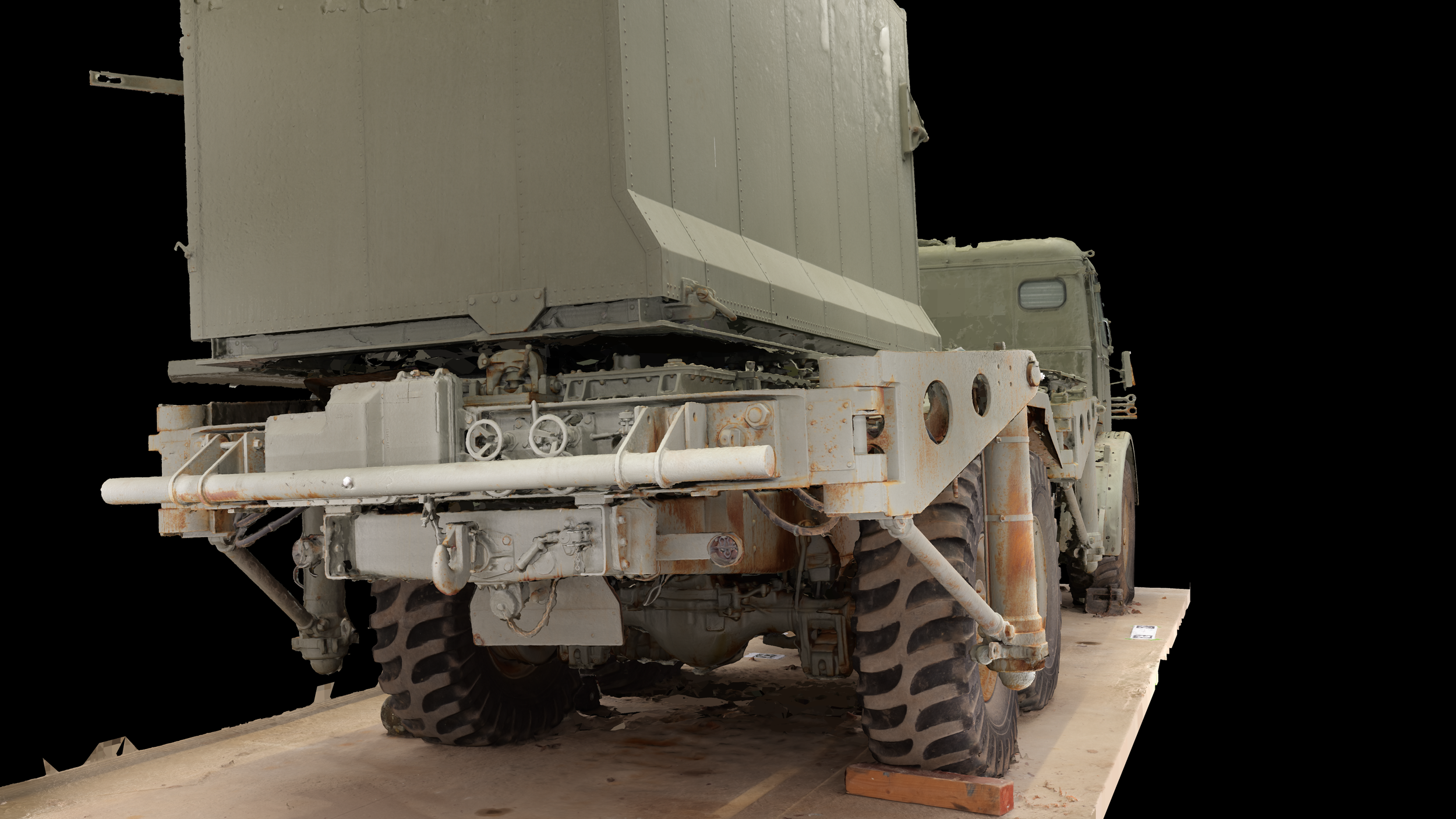
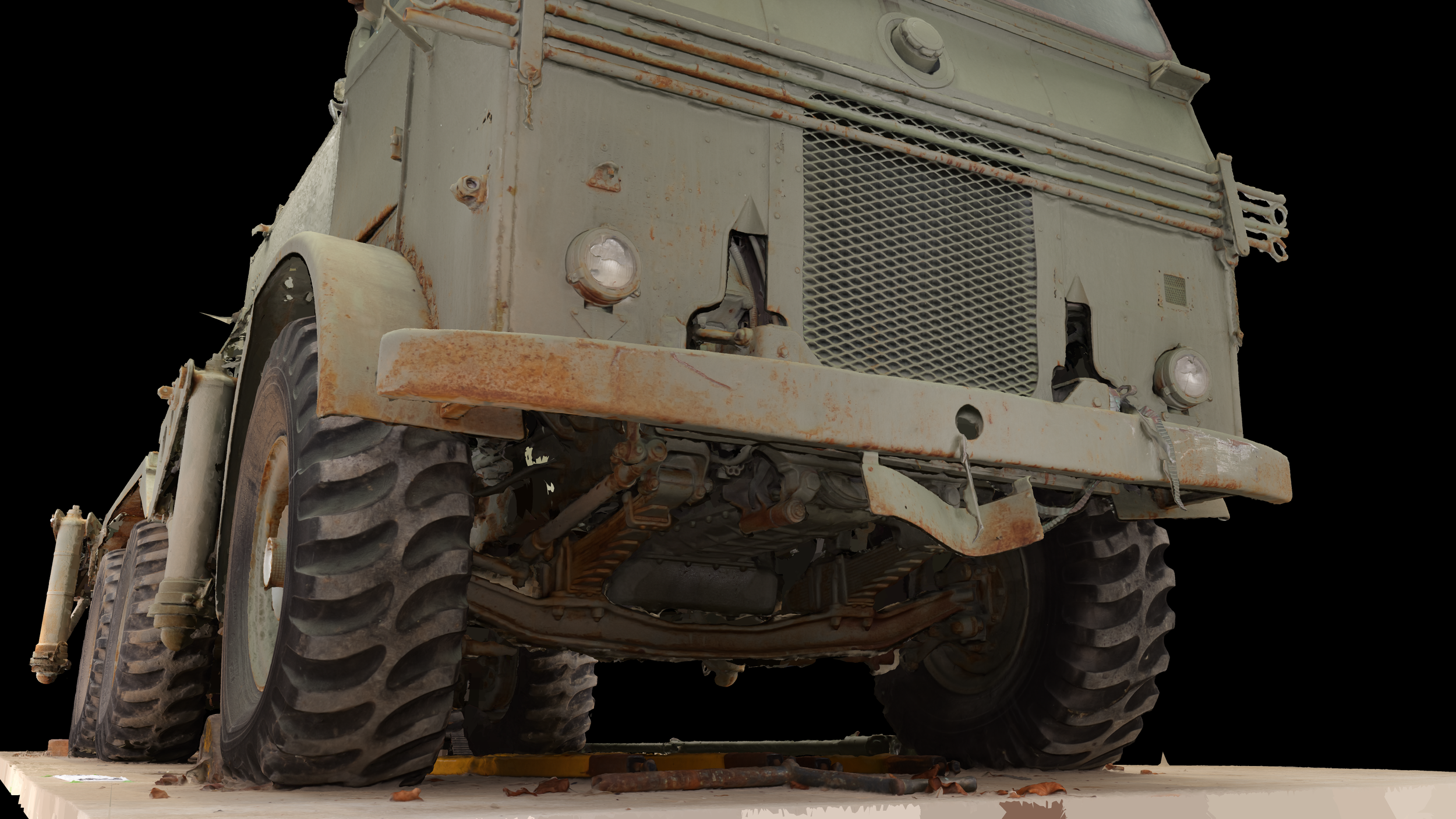
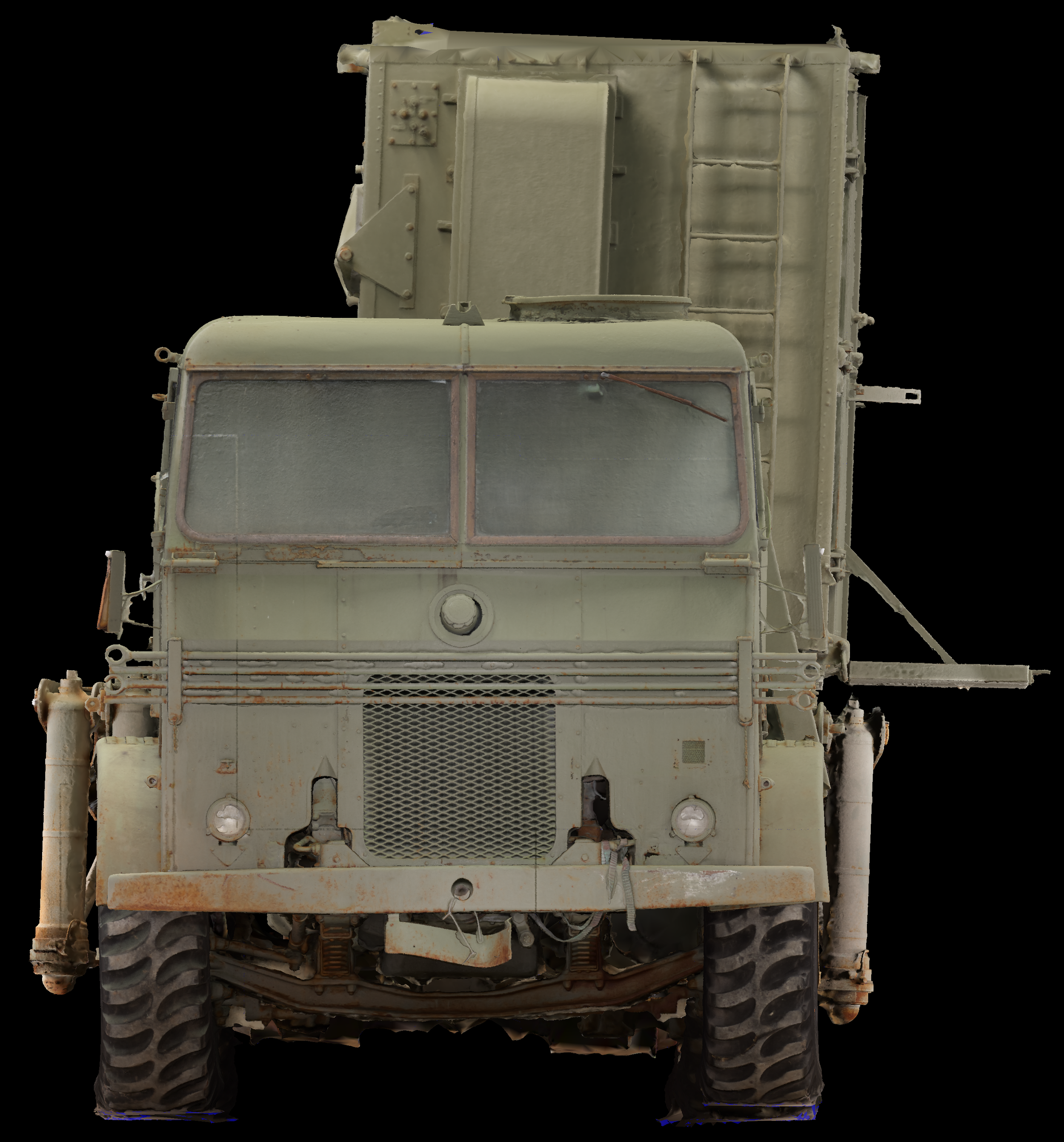
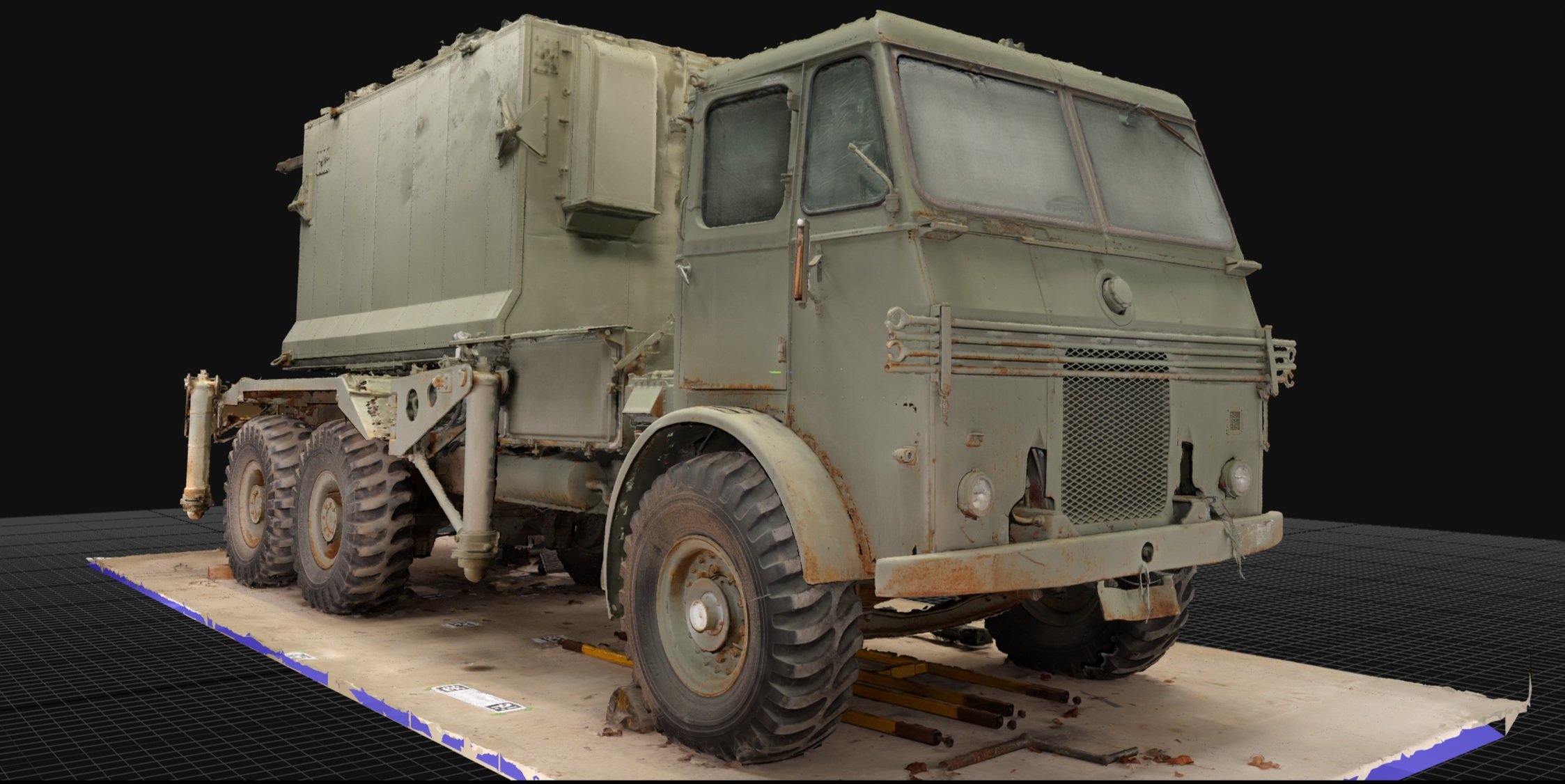

This project showcased the challenges and value of capturing large-scale, mechanically intricate subjects in less than favourable environments. It also demonstrated the importance of iterative scanning, using each version of the mesh to inform and improve the next round of image captures.
I hope to return to this project soon with a second phase to scan an re-create the antena section that’s currently under restoration and digitally reunite it with the body of the unit. The long term plan would be to animate the various elements and see the unit in use as it would have been

